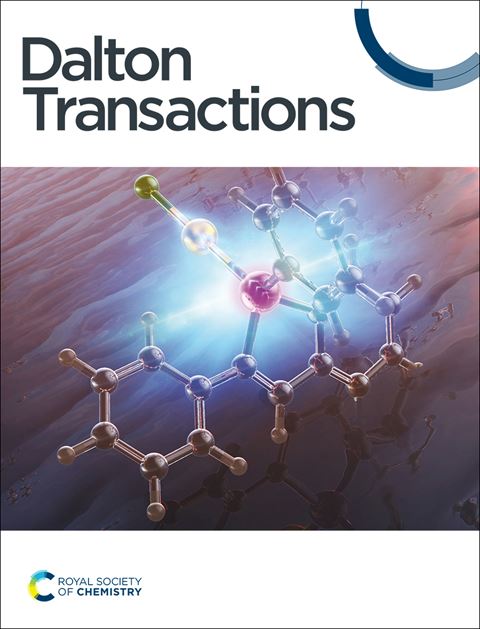Unusual zig-zag-shape Ln-radical coordination networks derived from a nitronyl nitroxide with two imidazole groups: single-crystal to single-crystal transformations and magnetic properties
IF 3.5
3区 化学
Q2 CHEMISTRY, INORGANIC & NUCLEAR
引用次数: 0
Abstract
Two unusual two-dimensional coordination networks, namely, {[Gd(hfac)3]3(NITPh-3,5-bIm)2}‧2.25C6H14 (1) and {[Dy(hfac)3]3(NITPh-3,5-bIm)2}‧2.5 C6H14 (2), have been achieved utilizing the multidentate nitronyl nitroxide ligand containing two additional imidazole groups NIT-Ph-3,5-bIm (NIT-Ph-3,5-bIm = 2-[3,5-bis(1-imidazole)phenyl]-4,4,5,5-tetramethylimidazoline-1-oxyl-3-oxide; hfac = hexafluoroacetylacetonate). In these Ln-radical complexes, the multidentate nitronyl nitroxide radical ligand serves as a tridentate linker to bind three LnIII ions via one NO group and two imidazole units of the radical, resulting in unique zig-zag-shape 2D networks with KIa topology. These coordination networks can undergo a single-crystal to single-crystal transformation from low-temperature non-centrosymmetric space group (P21) to room temperature centrosymmetric space group (P21/c) accompanied by the helicity loss of chiral chains and an order−disorder transition of LnIII ions. Direct-current magnetic susceptibility studies of the Gd derivative shows dominant ferromagnetic Gd-NO exchange. Dynamic magnetic studies of Dy analogs display temperature-dependent nonzero out of out-of-phase signals indicating slow magnetic relaxation behavior.由两个咪唑基团的硝基氮氧化物衍生的不寻常的锯齿形ln自由基配位网络:单晶到单晶的转变和磁性
利用含有两个附加咪唑基团的多齿硝基氮氧化物配体(nith - ph -3,5- bim)2}·2.25C6H14(1)和{[Dy(hfac)3]3(nitph -3,5- bim)2}·2.5 C6H14 (2)) (nith - ph -3,5- bim = 2-[3,5-双(1-咪唑)苯基]-4,4,5,5-四甲基咪唑啉-1-氧基-3-氧化物);Hfac =六氟乙酰丙酮)。在这些ln -自由基配合物中,多齿硝基氮氧化物自由基配体作为三齿连接体,通过自由基的一个NO基团和两个咪唑单元结合三个LnIII离子,形成独特的具有KIa拓扑结构的锯齿形二维网络。这些配位网络可以经历从低温非中心对称空间群(P21)到室温中心对称空间群(P21/c)的单晶到单晶转变,并伴有手性链的螺旋度损失和LnIII离子的有序-无序转变。Gd衍生物的直流磁化率研究表明,Gd- no交换占主导地位。Dy模拟物的动态磁性研究显示温度相关的非零失相信号,表明缓慢的磁弛豫行为。
本文章由计算机程序翻译,如有差异,请以英文原文为准。
求助全文
约1分钟内获得全文
求助全文
来源期刊

Dalton Transactions
化学-无机化学与核化学
CiteScore
6.60
自引率
7.50%
发文量
1832
审稿时长
1.5 months
期刊介绍:
Dalton Transactions is a journal for all areas of inorganic chemistry, which encompasses the organometallic, bioinorganic and materials chemistry of the elements, with applications including synthesis, catalysis, energy conversion/storage, electrical devices and medicine. Dalton Transactions welcomes high-quality, original submissions in all of these areas and more, where the advancement of knowledge in inorganic chemistry is significant.
 求助内容:
求助内容: 应助结果提醒方式:
应助结果提醒方式:


